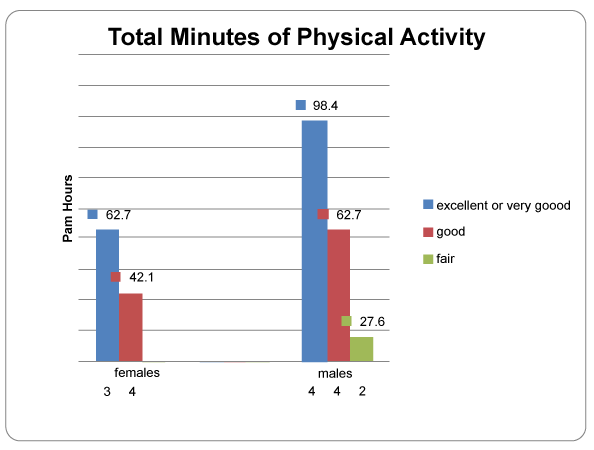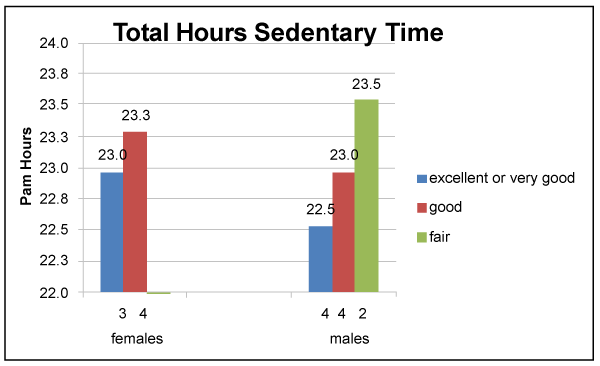Research Article Open Access
Self-Reported Health Status Predicts Physical Activity in Adults with Intellectual and Developmental Disabilities
| Leah Fitz Gerald1* and Joan Earle Hahn2 | |
| 1UCLA School of Nursing, Los Angeles, USA | |
| 2University of New Hampshire, College of Health and Human Services, Los Angeles, USA | |
| Corresponding Author : | Leah FitzGerald UCLA School of Nursing, 700 Tiverton Ave. Box 951702, Los Angeles, CA 90095-1702, USA Tel: 1-310-206-1065 E-mail: lfitzger@sonnet.ucla.edu |
| Received January 19, 2014; Accepted April 16, 2014; Published April 17, 2014 | |
| Citation: Gerald LF, Hahn JE (2014) Self-Reported Health Status Predicts Physical Activity in Adults with Intellectual and Developmental Disabilities . J Nov Physiother 4:204. doi: 10.4172/2165-7025.1000204 | |
| Copyright: © 2014 Gerald and Hahn. This is an open-access article distributed under the terms of the Creative Commons Attribution License, which permits unrestricted use, distribution, and reproduction in any medium, provided the original author and source are credited. | |
Visit for more related articles at Journal of Novel Physiotherapies
Abstract
Background: Health promotion and maintenance require behavior such as regular physical activity. Inactivity has been associated with morbidity and mortality in persons with intellectual and/or developmental disability (I/DD). Selfreported health has been shown to influence health behavior and has consistently predicted overall mortality and cardiovascular mortality in adults with I/DD. Precise physical activity measurement and knowledge of correlates of physical activity among persons with I/DD are limited. This study aims to continuously measure physical activity over a two week period in persons with I/DD while wearing Personal Activity Monitor (PAM) and determine if self-report health status influences physical activity.
Methods: Seventeen (10 male/7 female) participants with I/DD aged 18 to 59 years of age continuously wore PAM 24 hours a day for 14 days providing subject-specific individualized motion classification. Baseline assessment of factors associated with physical activity included assorted tools designed for persons with I/DD.
Results: Findings indicate that higher ratings of self-reported health status predicted greater physical activity in adults with I/DD. Those self-reporting their health as excellent/very good or good demonstrated significantly greater physical activity measured by PAM than those self-reporting their health as good or fair. Time spent in physical activity was below the recommended guidelines for health benefits. Neither age nor body mass index correlated with activity values.
Conclusions: Evaluation of self-reported health in persons with I/DD should be part of primary prevention strategies. Understanding the impact of self-reported health in this often under-served population can lead to focused interventions to improve fitness and well-being.
Tables and Figures at a glance
| Table 1 | Table 2 | Table 3 | Table 4 |
Figures at a glance
 |
 |
| Figure 1 | Figure 2 |
Relevant Topics
- Electrical stimulation
- High Intensity Exercise
- Muscle Movements
- Musculoskeletal Physical Therapy
- Musculoskeletal Physiotherapy
- Neurophysiotherapy
- Neuroplasticity
- Neuropsychiatric drugs
- Physical Activity
- Physical Fitness
- Physical Medicine
- Physical Therapy
- Precision Rehabilitation
- Scapular Mobilization
- Sleep Disorders
- Sports and Physical Activity
- Sports Physical Therapy
Recommended Journals
Article Tools
Article Usage
- Total views: 16043
- [From(publication date):
April-2014 - Jul 13, 2025] - Breakdown by view type
- HTML page views : 9067
- PDF downloads : 6976
